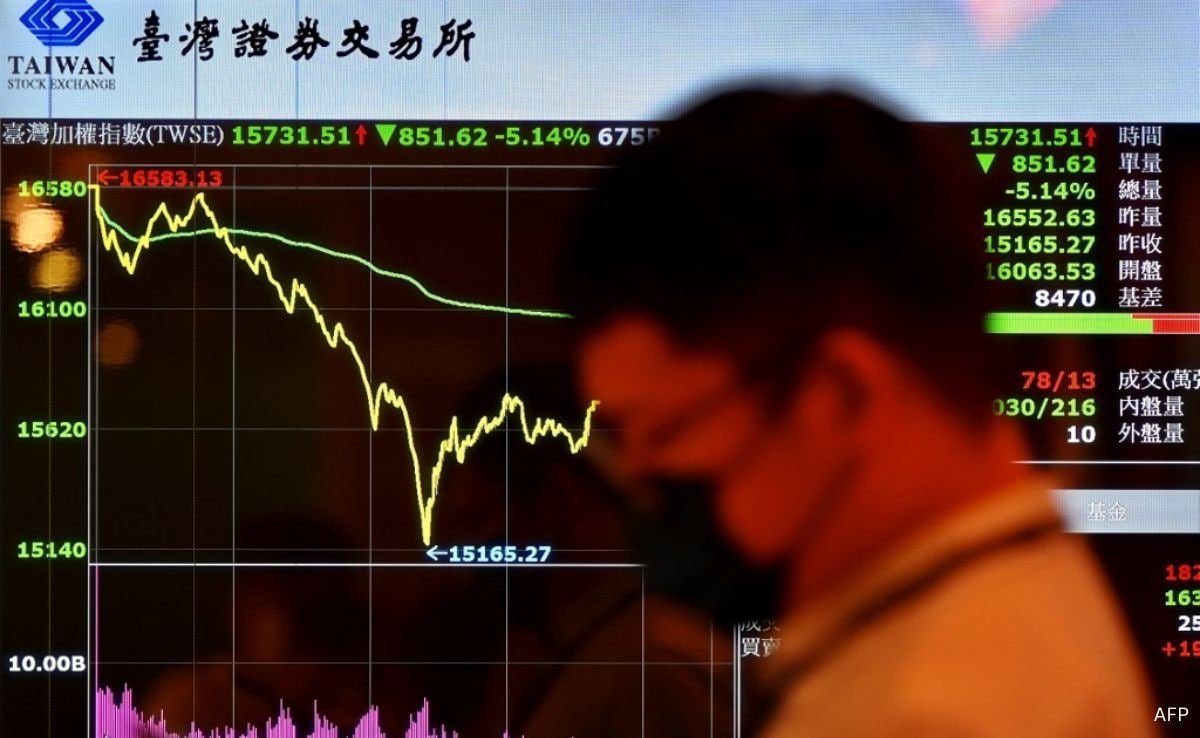
New Delhi:
The Asian stock markets took a big dip on Monday (April 7), as the market sales continued for the “mutual” tariff of US President Donald Trump. Exchange operators in Japan and Taiwan had to call a summarized call to trading to stop panic selling as investors saw the rising risk of recession cutting US interest rates in early May.
In Japan, the “Circuit Breaker” system stopped trading for 10 minutes when widely trading Nikkei 225 futures product was designed to fall more than 8 percent. According to a report by Wall Street Journal, the circuit breaker was kicked at Tokyo time at 8:45 am for Nikkei 225 and many other futures contracts. This ended 10 minutes later, without affecting the purchase and sales of shares on the Tokyo Stock Exchange.
In the early trade in Japan on Monday, Nikkei was away from an eye-water from 225 6.5 percent, which was somewhat cured somewhat after falling about 9 percent earlier.
Taiwan’s stock operators also pulled a circuit breaker after experienced by about 10 percent fall on Monday. The head of Taiwan’s stock exchange indicated that further stabilization measures would be applied if necessary to combat market instability.
The weighted index on Taiwan, Taiwan Stock Exchange declined by 9.8 percent in the open, as the trading resumed after a long weekend. The Taiwanese markets were closed for a holiday on Thursday and Friday, as trillions of trillions were erased from global shares and value of countries to limit the effects of Trump’s levy.
It is the lowest point in Taiwan’s benchmark index in a year. Fear of turmoil, Taiwan’s chief financial regulator on Sunday imposed temporary boundaries on small sale – a condition that will fall – in a bid to stabilize the market when the trading resumes on Monday.
The Financial Supervisory Commission said in a statement, this measure will be till Friday.
Taipei had sought to avoid Trump’s danger tariff, avoiding increased investment in the United States and excessive purchase of American energy, but it was still hit by 32 percent tax on its imports, leaving semiconductor chips. Shares of major Taiwanese companies, including chipmaker TSMC and electronics giant Foxconn, saw a 10 percent decline.
Blood bath was also seen in other markets including Singapore and Hong Kong in Asia. The stock in Singapore was 8.5 percent lower, while South Korea’s Kospi was 4.8 percent. In Hong Kong, shares declined by more than nine percent. The Hang Seng index fell at 9.28 percent, or 2,119.76 points, 20,730.05, while the mainland in China at the Shanghai Composite Index 4.21 percent, or 140.84 points, at 3,201.17.
Australian Blue-Chip Stock, a benchmark index of the country’s largest 200 listed companies, also drowned 6 percent after trading on Monday. A circuit breaker was triggered at the Taiwan Stock Exchange as the shares fell by 9.8 percent.
Indian share On Monday, it was also rapidly opened. Nifty 50 recorded a 5 percent decline in pre-open trade as 09:08 AM IST, while BSE Sensex fell 5.29 percent to 71,379.89.
All 13 major areas declined. The broad small-cap and mid-capcies decreased by 10 percent and 7.3 percent respectively.
This came when the US market showed no signal of revival, with futures contracts for the main boards of New York Stock Exchange, falling down on Sunday fast on Sunday, suggested more pain for Wall Street shares when the market opened on Monday. The benchmark S&P 500 futures slipped 4.31 percent in volatile trading, while Nasdaq futures diverted 5.45 percent of the previous week’s loss.
What are circuit breakers
Circuit breaker is a stock market facility that prevents trading in exchanges when the markets fall rapidly. This remedy was born from the 1987 “Black Mande” stock-market crash. The intention behind this step is to prevent panic selling and avoid stock-market spiral at another bottom. Stagnation applies in many levels.
In the US, if the S&P 500 declines by 7 percent or 13 percent, the trading will be stopped for 15 minutes. If it falls 20 percent, the business will close for the rest of the day.

